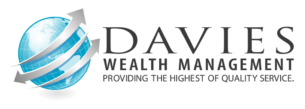Risk Management and Your Retirement Savings Plan
By investing for retirement savings through your employer-sponsored plan, you are helping to manage a critically important financial risk: the chance that you will outlive your money. But choosing to participate is just one step in your financial risk management strategy. You also need to manage risk within your account to help it stay on track. Following are steps to consider.
Familiarize yourself with the different types of risk
All investments, even the most conservative, come with different types of risk. Understanding these risks will help you make educated choices in your retirement savings plan mix. Here are just a few.
- Market risk: The risk that your investment could lose value due to falling prices caused by outside forces, such as economic factors or political and national events (e.g., elections or natural disasters). Stocks are typically most susceptible to market risk, although bonds and other investments can be affected as well.
- Interest rate risk: The risk that an investment’s value will fall due to rising interest rates. This type of risk is most associated with bonds, as bond prices typically fall when interest rates rise, and vice versa. But often stocks also react to changing interest rates.
- Inflation risk: The chance that your investments will not keep pace with inflation, or the rising cost of living. Investing too conservatively may put your investment dollars at risk of losing their purchasing power.
- Liquidity risk: This is the risk of not being able to quickly sell or cash-in your investment if you need access to the money.
- Risks associated with international investing: Currency fluctuations, political upheavals, unstable economies, additional taxes–these are just some of the special risks associated with investing outside the United States.
Know your personal risk tolerance
How much risk are you willing to take to pursue your savings goal? Gauging your personal risk tolerance–or your ability to endure losses in your account due to swings in the market–is an important step in your risk management strategy. Because all investments involve some level of risk, it’s important to be aware of how much volatility you can comfortably withstand before you select investments.
One way to do this is to reflect on a series of questions, which may include the following:
- How much do you need to accumulate to potentially provide for a comfortable retirement savings? The more you need to save, the more risk you may need to take in pursuit of that goal.
- How well would you sleep at night knowing your investments dropped 5%? 10%? 20%? Would you flee to “safer” options? Ride out the dip to strive for longer-term returns? Or maybe even view the downturn as a good opportunity to buy more shares at a value price?
- How much time do you have until you will need the money? Typically, the longer your time horizon, the more you may be able to hold steady during short-term downturns in pursuit of longer-term goals–and the more risk you may be able to assume.
- Do you have savings and investments outside your employer plan, including an easily accessed emergency savings account with at least six months worth of living expenses? Having a safety net set aside may allow you to feel more confident about taking on risk in your retirement portfolio.
Your plan’s educational materials may offer worksheets and other tools to help you gauge your own risk tolerance. Such materials typically ask a series of questions similar to those above, and then generate a score based on your answers that may help guide you toward a mix of investments that may be appropriate for your situation.
Develop a target asset allocation
Once you understand your risk tolerance, the next step is to develop an asset allocation mix that is suitable for your retirement savings goal while taking your risk tolerance into consideration.
Asset allocation is the process of dividing your investment dollars among the various asset categories offered in your plan, typically stocks, bonds, and cash/stable value investments. Generally, the more tolerant you are of investment risk, the more you may be able to invest in stocks. On the other hand, if you are more risk averse, you may want to invest a larger portion of your portfolio in conservative investments, such as high-grade bonds or cash.
Your time horizon will also help you determine your risk tolerance and asset allocation. If you’re a young investor with a hardy tolerance for risk, you might choose an allocation with a high concentration of stocks because you may be able to ride out short-term swings in the value of your portfolio in pursuit of your long-term goals. On the other hand, if retirement is less than 10 years away and you can’t afford to risk losing money, your allocation might lean more toward bonds and cash investments. (However, consider that within the bond asset class, there are many different varieties to choose from that are suitable for different risk profiles.)
Be sure to diversify
All investors–whether aggressive, conservative, or somewhere in the middle–can potentially benefit from diversification, which means not putting all your eggs in one basket. Holding a mix of different investments may help your portfolio balance out gains and losses. The principle is that when one investment loses value, another may be holding steady or gaining (although there are no guarantees).
Let’s look at the previous examples. Although the young investor may choose to put a large chunk of her retirement savings account in stocks, she should still consider putting some of the money into bonds and possibly cash to help balance any losses that may occur in the stock portion. Even within the stock allocation, she may want to diversify among different types of stocks, such as domestic, international, growth, and value stocks, to reap any potential gains from each type.
What about more conservative investors, such as those nearing or in retirement? Even for these individuals it is generally advisable to include at least some stock investments in their portfolios to help assets keep pace with the rising cost of living. When a portfolio is invested too conservatively, inflation can slowly erode its purchasing power.
Understanding dollar cost averaging
Your employer-sponsored plan also helps you manage risk automatically through a process called dollar cost averaging (DCA). When you contribute to your plan, chances are you contribute an equal dollar amount each pay period, and that money is then used to purchase shares of the investments you have selected. This process–investing a fixed dollar amount at regular intervals–is DCA. As the prices of the investments you purchase rise and fall over time, you take advantage of the swings by buying fewer shares when prices are high and more shares when prices are low–in essence, following the old investing adage to “buy low.” After a period of time, the average cost you pay for the shares you accumulate may be lower than if you had purchased all the shares in one lump sum.
Remember that DCA involves continuous investment in securities regardless of their price. As you think about the potential benefits of DCA, you should also consider your ability to make purchases through extended periods of low or falling prices.
Perform regular maintenance
Although it’s generally not necessary to review your retirement portfolio too frequently (e.g., every day or even every week), it is advisable to monitor it at least once per year and as major events occur in your life. During these reviews, you’ll want to determine if your risk tolerance has changed and check your asset allocation to determine whether it’s still on track. You may want to rebalance–or shift some money from one type of retirement savings to another–to bring your allocation back in line with your original target, presuming it still suits your situation. Or you may want to make other changes in your portfolio to keep it in line with your changing circumstances. Such regular maintenance is critical to help manage risk in your portfolio.
When developing a retirement savings plan to manage risk, it may also help to seek the advice of a financial professional. An experienced professional can help take emotion out of the equation so that you may make clear, rational decisions.





Leave a Reply